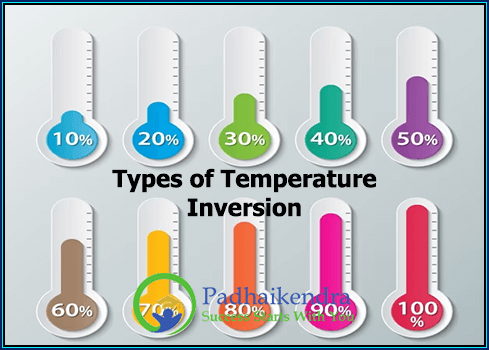Temperature inversion is a phenomenon where the temperature increases with altitude, contrary to the normal decrease in temperature with altitude. This condition can have various types based on the location, the height of the inversion layer, and the cause.
Some of the common types of temperature inversions are:
- Surface inversion: This type of inversion occurs close to the ground, usually within a few hundred meters. It is formed during clear and calm nights when the ground radiates heat to the atmosphere, causing the air close to the ground to cool rapidly. This inversion layer can be a few meters to several hundred meters thick.
- Subsidence inversion: Subsidence inversion is formed due to the sinking of cold air in high-pressure systems. As the air sinks, it gets compressed and heats up, leading to an increase in temperature with height. This type of inversion is usually located at an altitude of 1-2 km.
- Frontal inversion: Frontal inversion occurs along the boundary of two air masses with different temperatures. When a cold front replaces a warm front, the warmer air is lifted up, and the colder air settles down, leading to the formation of an inversion layer.
- Radiation inversion: Radiation inversion is formed due to the cooling of the earth’s surface after sunset. The heat absorbed by the ground during the daytime is radiated back to the atmosphere, causing the air near the surface to cool down. This inversion layer can be several hundred meters thick and is generally formed on clear and calm nights.
- Advection inversion: Advection inversion occurs when warm air moves over a cold surface, leading to the formation of an inversion layer. This type of inversion is common in coastal regions, where the ocean’s cold air is carried inland by the wind.
Temperature inversions have a significant impact on weather and air quality. They can lead to the formation of fog, smog, and low-level clouds, and can also trap pollutants close to the surface, leading to poor air quality.





